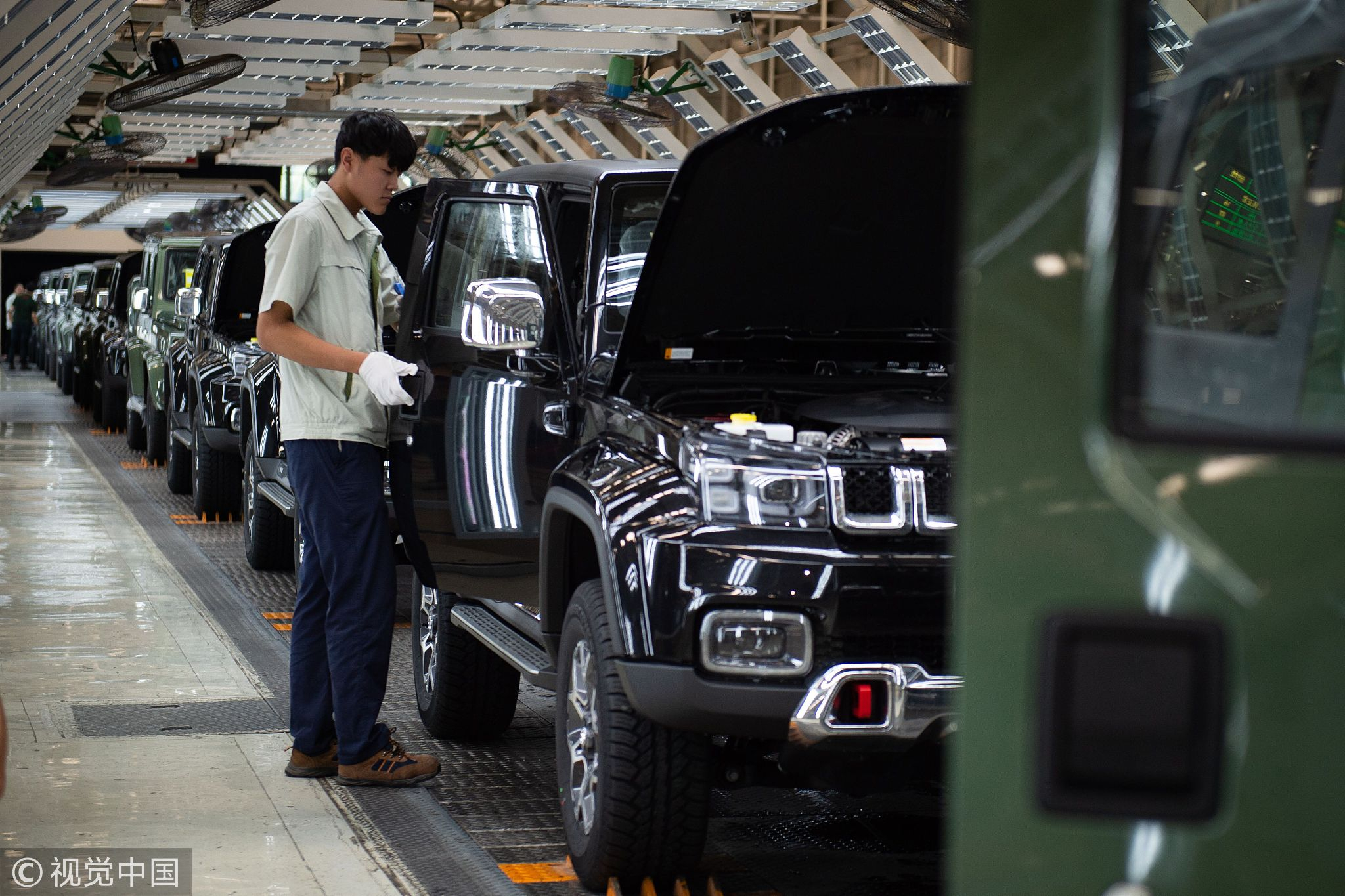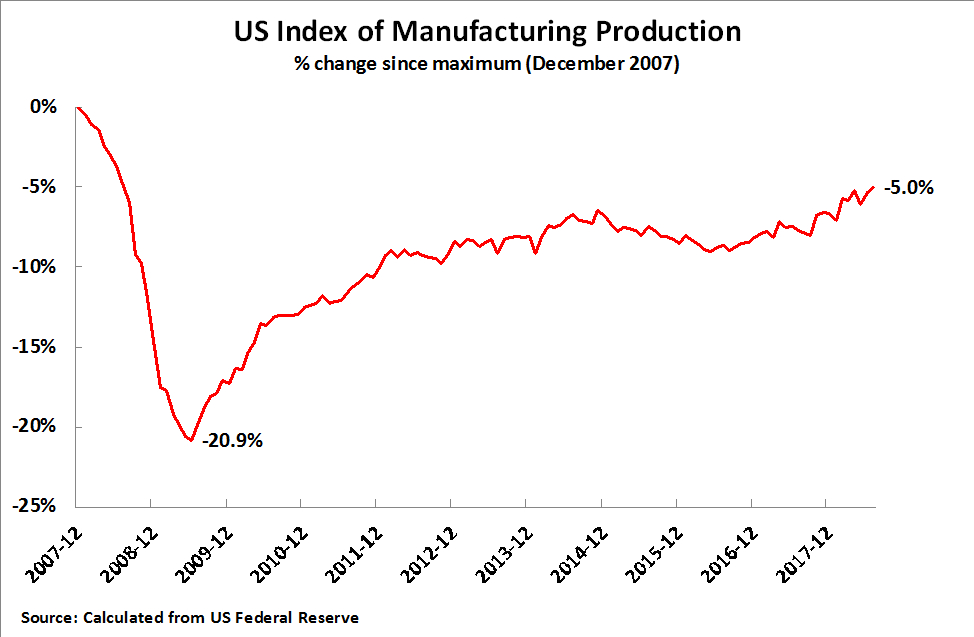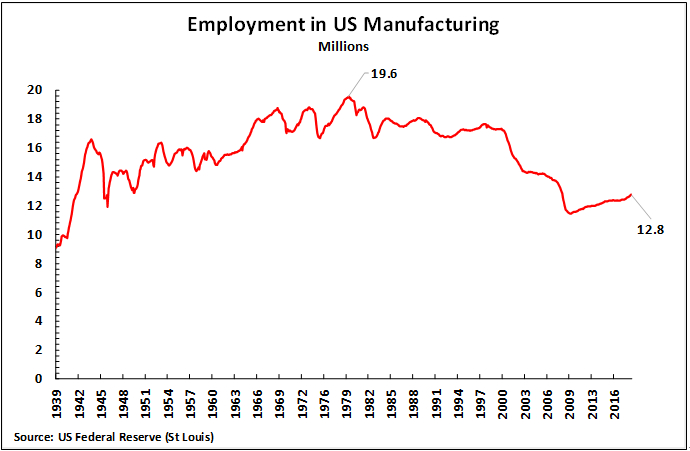
Opinions
22:04, 14-Sep-2018
Opinion: Made in America again? Not just yet
Updated
21:55, 17-Sep-2018
John Ross

Editor's note: John Ross is a senior fellow at Chongyang Institute for Financial Studies under Renmin University of China. He is former director of economic and business policy for the mayor of London. The article reflects the author's opinion, and not necessarily the views of CGTN.
In relation to myths in sections of the Chinese media regarding a (non-existent) expansion of US manufacturing, I remember being contacted by one Chinese media outlet and being asked if I would write an article on, "the implications for China of the expansion of US manufacturing."
I replied, "there are no implications, because there is no expansion of US manufacturing." The editor was astonished and said, "but a US report, says there is going to be a big expansion of US manufacturing."
This comment referred to the Boston Consulting Group report in 2011 "Made in America, Again: Why Manufacturing Will Return to the US," which argued that there was going to be a major expansion of the US manufacturing industry due to "reshoring" – a return of the US manufacturing industry from abroad.

A worker on an SUV production line on the BAIC (Beijing Automotive Group Co.) in Beijing, August 29, 2018. /VCG Photo
A worker on an SUV production line on the BAIC (Beijing Automotive Group Co.) in Beijing, August 29, 2018. /VCG Photo
My reply was simply that the wise Chinese saying says "seek truth from facts" not "seek truth from propaganda from US consulting companies."
I know that the myth of US "reshoring" and expansion of US manufacturing continues to be believed in sections of China's media although, as will be shown, it is entirely untrue.
However, the factual record seven years after this media dispute is totally clear – 11 years following the international financial crisis US manufacturing production has not even regained its previous peak level.
In this article, to use the method of "seek truth from facts," first the reality of US manufacturing production will be analyzed and then its consequences considered.
Origin of the myth of US manufacturing expansion
The origin of the myth of a major US manufacturing expansion may be traced to a report published by the Boston Consulting Group. Entitled "Made in America, Again: Why Manufacturing Will Return to the US," this report claimed: "the US, with an increasingly flexible workforce and a resilient corporate sector, is becoming an increasingly attractive place to manufacture goods consumed on this continent."
This argument was repeated, without supporting facts, by other Western commentators – the Washington Post columnist Vivek Wadha arguing: "America is destined to once again gain its supremacy in manufacturing," while more anecdotally the British Daily Telegraph proudly announced: "US exports millions of chopsticks to China!!!"

US President Donald J. Trump motions to the crowd after delivering his remarks and touring the United States Steel Granite City Works in Illinois on July 26, 2018. /VCG Photo
US President Donald J. Trump motions to the crowd after delivering his remarks and touring the United States Steel Granite City Works in Illinois on July 26, 2018. /VCG Photo
The report "Made in America, Again" claimed: "we expect companies to begin building more capacity in the US to supply North America. The early evidence of such a shift is mounting." The report then named some individual examples of how a few companies have moved their production line to China and rehired Americans.
But drawing conclusions as big as “Made in America, Again” based on individual examples, not systematic data should itself immediately have aroused suspicion in all sections of China's media.
As a report by the US Information Technology and Innovation Foundation (ITIF) "The Myth of America's Manufacturing Renaissance," rightly noted: "the claims for a structural rebirth of US manufacturing are unfortunately based on myths and anecdotes,” states Robert Atkinson, President of ITIF. “Instead, any assessment of US manufacturing should be based on rigorous analysis and review of the official data.”
In fact, seven years after the original report "Made in America, Again" the evidence is conclusive. Far from expanding US manufacturing production has not even regained its previous peak levels.
US manufacturing production after 11 years is still below its peak
To show the factual trends in US manufacturing the chart below illustrates the development of US manufacturing production over the last 30 years.

The dynamic is clear. US manufacturing production reached its all-time peak in December 2007 – almost 11 years ago. By July 2018, the latest available data show that US manufacturing production was still five percent below this peak.
In other words, in the last 11 years, US manufacturing production has totally failed to expand – indeed it has not even regained its earlier level. The chart below shows the trend since the US peak level of production in more detail.

Far from there being a big expansion of US manufacturing, all which has occurred is a slow cyclical recovery which over a prolonged period has so far failed even its earlier previous levels of peak manufacturing output.
US manufacturing employment
The same pattern as in production may be seen in US manufacturing employment. After rising for four decades since the commencement of World War II, peak US manufacturing employment was reached in June 1979 at 19.6 million. The chart below shows it has since fallen to 12.8 million.

Looking at the more recent period in more detail, employment in US manufacturing began to decline even before US peak manufacturing was reached in December 2007 – US manufacturing employment was 14 million in January 2007 and fell thereafter. It has then failed to regain its previous level, US manufacturing employment in July 2018 was 12.8 million – 1.2 million below its level of January 2007.
Therefore, whether measured in terms of production or of employment, no expansion of US manufacturing has taken place.
(If you want to contribute and have a specific expertise, please contact us at opinions@cgtn.com)

SITEMAP
Copyright © 2018 CGTN. Beijing ICP prepared NO.16065310-3
Copyright © 2018 CGTN. Beijing ICP prepared NO.16065310-3